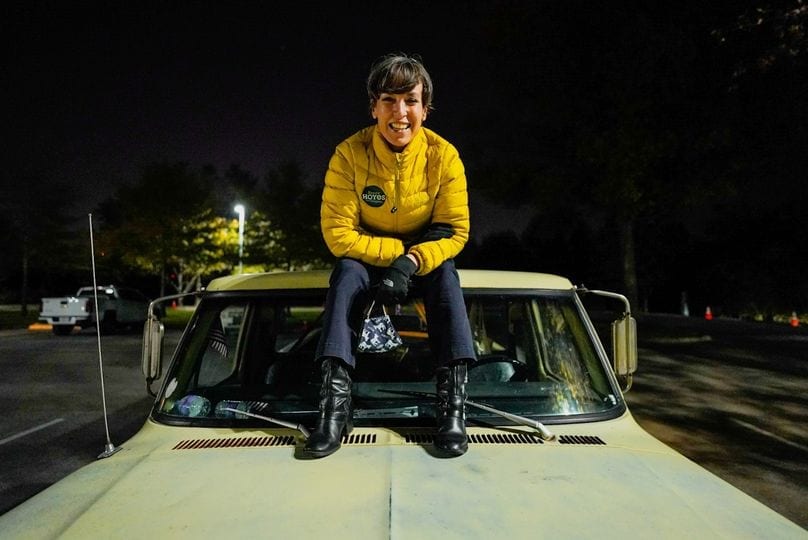Hoyos Says She Won’t Run Again for Tennessee’s Second Congressional District

Renee Hoyos sits with her truck, "Shorty the Longbed" during election run. Photo credits to Hoyos for Congress Campaign.
Renee Hoyos, the Democratic candidate for the Tennessee District 2 Congressional race, said she will not run for the same position again. In an interview, Hoyos said that after much hard work, her campaign was not able to break the 60%-30% split that the district yields.
“I thought hard work could flip this district. So we worked hard, made over 500,000 contacts into the district, hired five field organizers, and had about 40 interns working hard during a pandemic,” she said. “We raised more money than any Democrat running in a Republican Congressional District in Tennessee in the past 10 years. Our polling showed we had a chance.”
Hoyos received more than 109,000 votes in the district, but fell short of Congressman Tim Burchett’s 238, 447 votes. With 67.7% of the votes, Burchett retains his seat in Congress for District 2 of Tennessee.
“It comes down to a very Republican district that is highly gerrymandered to produce a 30-60 cap. I don’t know that we could get much higher than that. The maps are scheduled to change again in 2021,” Hoyos said. “No doubt with Republicans in a supermajority in the Tennessee Legislature, the maps will be even more partisan and so our chances to have fair elections may be delayed for up to 10 more years.”
Gerrymandering is the process of mapping out boundaries for electoral districts “for political advantage,” explains University of Tennessee Political Science Lecturer Hemant Sharma. “This usually connotes a district being drawn in an odd shape, and there are plenty of interesting examples from around the country. The Supreme Court’s only substantive guidance on this issue has indicated that all of a state’s districts should have approximately equal population, as articulated in the case of Reynolds v. Sims (1964).”
Hoyos said that if the maps were more evenly distributed, there could have been a chance. “If the maps were made to be 50/50 or even 40/60, you’d likely see more Democratic districts. Unless the maps change, the outcomes, in my opinion, won’t be much more than 30ish/60ish, no matter how hard we work.”
Former State Supreme Court Justice Bill Koch has previously said that gerrymandering is a significant barrier for qualified political candidates that ultimately hurts voters.
Sharma explained that “the tricky part is finding a definitive way to identify a gerrymandered district and beyond that, to ‘correct’ the issue. In 2019, in Rucho v. Common Cause, the Supreme Court noted the difficulty in coming up with a one-size-fits-all corrective measure and instead indicated that federal courts should stay out of partisan gerrymandering cases,” Sharma said. “Many state supreme courts retain the authority to review gerrymandering claims, and some states are even turning to independent commissions to draw districts.”
Reform is “slow,” Sharma said, but the issue of gerrymandering is likely to be taken up in the courts again.

